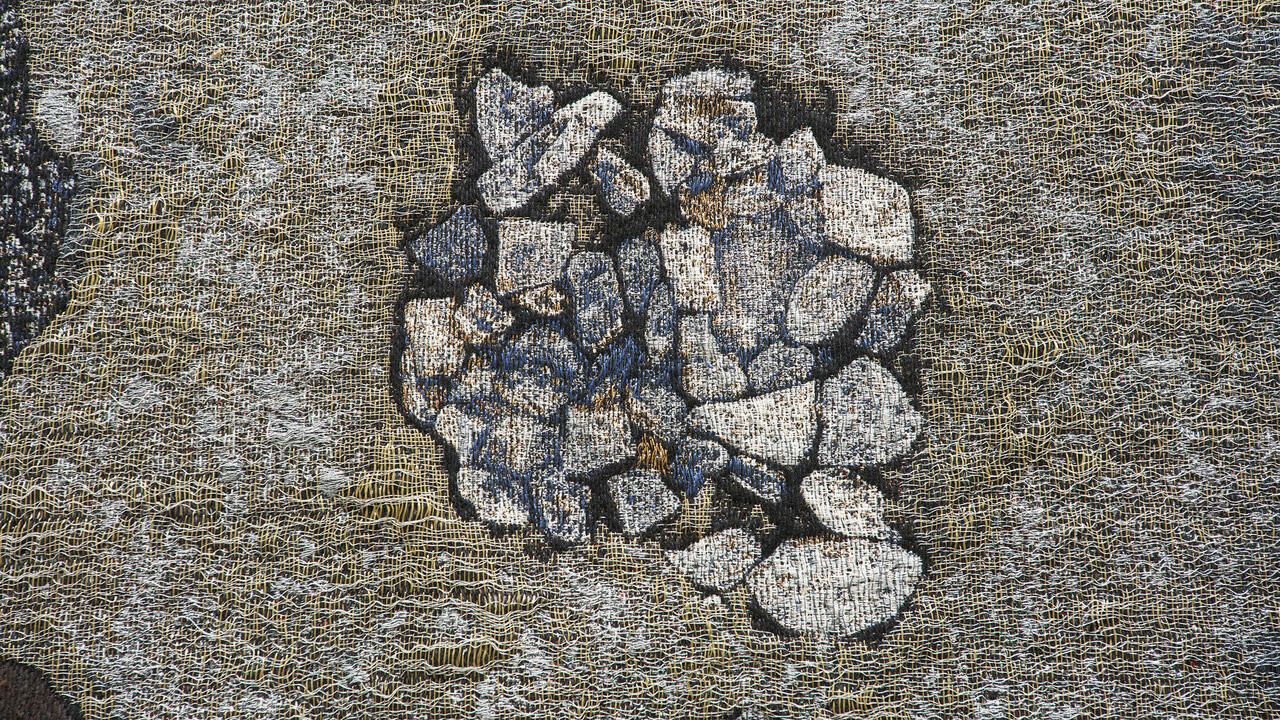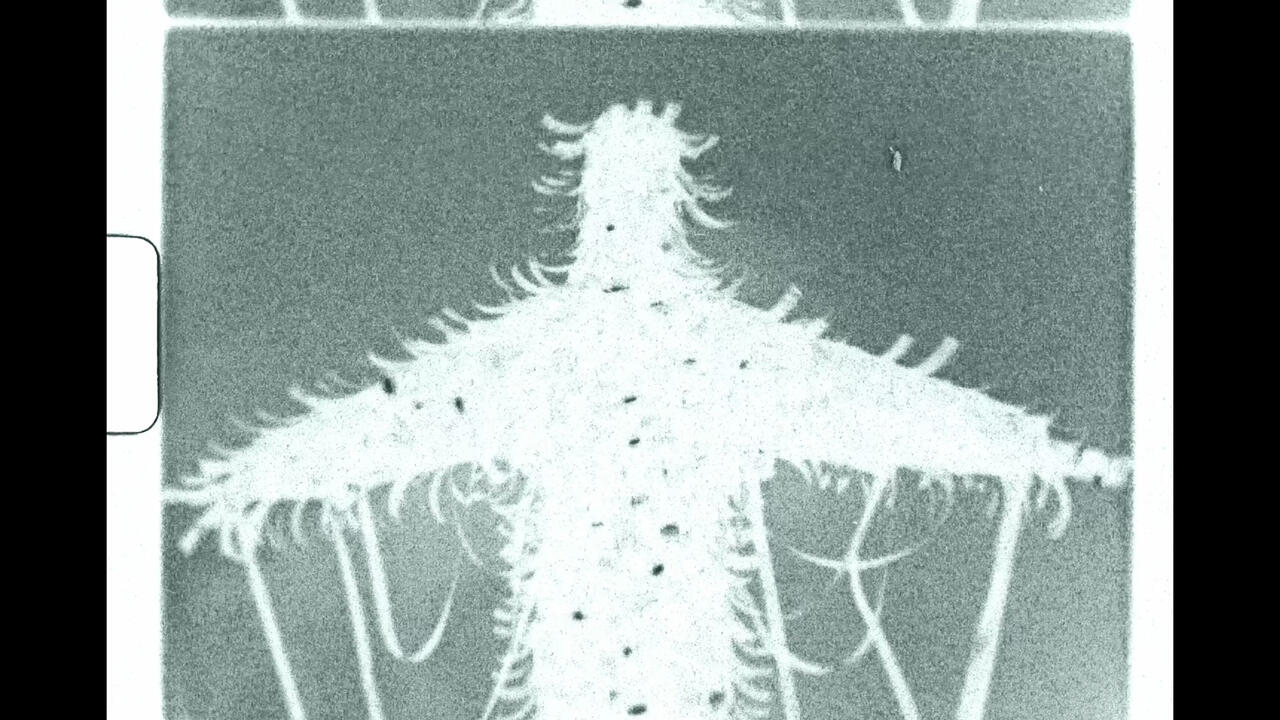Toronto’s Artists Respond to a City in Flux
At MOCA Toronto, a triennial explores the cultural milieu of a city increasingly troubled by gentrification and real-estate development
At MOCA Toronto, a triennial explores the cultural milieu of a city increasingly troubled by gentrification and real-estate development

Whenever I see one of Catherine Telford Keough’s sculptures, I’m reminded of half-melted heaps of snow, embedded with various lost items they’ve accrued during the long winter months: candy bars, pills, bottle caps and gum wrappers suspended in the frozen mass. Her evocative installation, Carriers (Gravity-Fed) (2024), sits nicely alongside works whose material explorations provoke a similar sense of melancholy. Jes Fan’s Interface I and Interface II (both 2024), the soy skins of which seem to melt off their supports. In Lotus L. Kang’s shed (Receiver Transmitter [Butterfly], 2023–24), rolled up prints and neatly folded mats gesture at an absence. All three artists have left Toronto for New York in recent years.
It’s springtime, and the city is waking up to ‘Greater Toronto Art 24’ – a triennial survey held at the Museum of Contemporary Art. Curated by Kate Wong, Toleen Touq and Ebony L. Haynes, this year’s survey is an astute portrait of a city in transition – at once familiar and unsettling. It speaks to a paradoxical art scene characterized by practices united in their feeling of alienation. I blame the abysmal cost of living. Over the past decade, Toronto’s insatiable real-estate development choked out both immigrant neighbourhoods and artistic communities, and it’s deeply felt.

On the main floor, photographs of the city in the 1970s and ’80s by June Clark present an erstwhile, convivial vision of life in the metropolis. G.B. Jones’s graphite drawings of supposedly haunted buildings across the province pay homage to Southern Ontario Gothic, a regional literary genre practised by Alice Munro and Margaret Atwood, among others. Placed on the wall behind Oliver Husain and Kerstin Schroedinger’s film installation DNCB (2021), they benefit from the bleeding of its ominous soundtrack by Ain Bailey. “DNCB” stands for Dinitrochlorobenzene, a toxic chemical used in the processing of color film that was once used as an experimental AIDS treatment in the 1980s, and the film’s themes of queer camaraderie in the face of artificial constraints and biopolitical regulation carry through to the third floor. Here, the room is bookended by Sin Wai Kin’s transcendent film, A Dream of Wholeness in Parts (2021), and an installation of two shorts by Theo Jean Cuthand: Sight (2012) and Love & Numbers (2004). Both artists address ways in which profound spiritual alienation manifests in the physical, medical and psychological realms.
Timothy Yanick Hunter’s Stereo as a Prefix (2024) bisects the room with a windowed wall. Presented as an aggregate of moving and still images from Senegal, Jamaica and Canada, Hunter’s astute collage of ornamental buildings and jewellery evokes the now-crumbling architectures built by French colonizers in Senegal. Jean-Paul Kelly’s adjacent, humorous treatment of French moralism seems especially apt here: six rather graphic vignettes, entitled How Cruelty Disgusts the View while Pity Charms the Sight, No.1–No.6 (2024), take their title from William Hogarth’s The Four Stages of Cruelty (1751), a series of engravings intended to serve as moral parables.

In Ésery Mondésir’s What Happens to a Dream Deferred (2019), Canada’s role in the web of French colonialism is clarified in relation to the disaster unfolding in Haiti. The film traces immigration and emigration through a series of texts between migrants, presented against a backdrop of Donald Trump’s derogatory speeches and Langston Hughes’s influential poem ‘Harlem’ (1951). Mounted near the exit, Mondésir’s The Mother Was Feeding It Alright (2019) is another sobering account of the inhumane attitude all-too-often met by immigrants upon arrival. Like many of the works in the exhibition, it seems to ask: How did we get here?
‘Greater Toronto Art 2024’ is on view at the Museum of Contemporary Art, Toronto, until 28 July
Main Image: ‘Greater Toronto Art 2024’, exhibition view. Courtesy: MOCA Toronto and the artists; photograph: LF Documentation
























